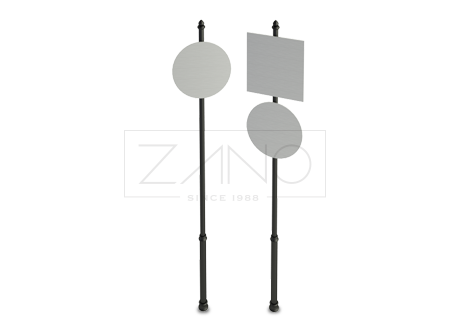
Traffic sign posts are an essential component in the organization and safety of road systems, guiding drivers through regulations and informative directives. Typically crafted from robust materials such as galvanized steel, aluminum, or durable plastics, these posts must withstand various environmental challenges including extreme weather conditions, corrosion, and physical impacts.
The versatility in the design of traffic sign posts allows for their use in multiple locations such as urban streets, highways, and rural areas. They come in different sizes and shapes, including round, square, and u-channel posts, each varying in thickness and length to meet specific regulatory standards and installation environments. The most common heights are designed to make the signs clearly visible at a distance to all vehicle types, including cars and larger commercial vehicles.
Installation of these posts is designed for permanency and resilience; methods vary from direct burial in the ground to mounting on concrete bases, depending on the location and soil conditions. Additionally, modern traffic sign posts often feature breakaway designs that ensure the post shears or falls in a manner that minimizes the risk of injury to vehicle occupants in the event of a collision.
To maximize the visibility of traffic signs at night or in poor light conditions, many traffic sign posts are paired with reflective materials or may even incorporate lighting systems. These enhancements are crucial for maintaining road safety around the clock.
Overall, traffic sign posts are pivotal in upholding order and safety on roads, seamlessly blending functionality with durability to guide, warn, and regulate traffic effectively. They represent an indispensable element of street and urban furniture, engineered to meet stringent safety and quality standards whilst accommodating the dynamic and varied needs of modern traffic management systems.